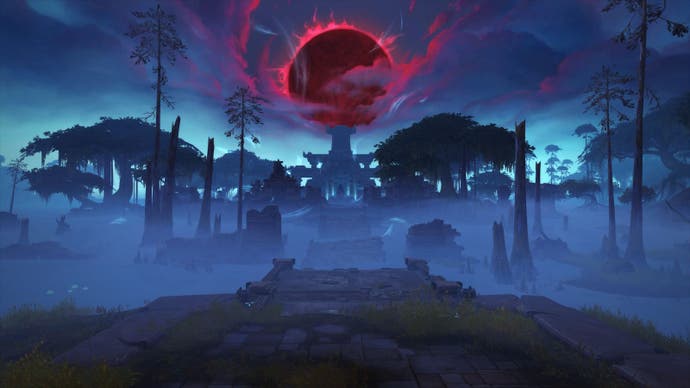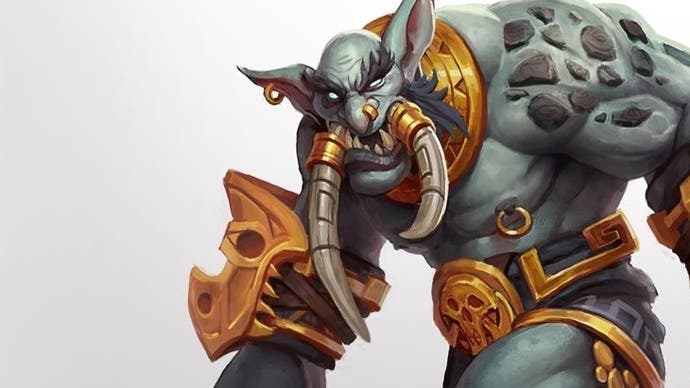Blizzard wants to cut out World of Warcraft crunch, "not there 100% yet"
"We're dramatically better than we were..."
Recently, the controversy over working conditions in game development has moved from the punishing workload involved in shipping big releases like Red Dead Redemption 2 to the stresses of keeping popular online games constantly updated, thanks to a Polygon report on the relentless crunch at Fortnite developer Epic.
While it may not move at the pace of the latest battle royale games, Blizzard's evergeen online RPG World of Warcraft, which celebrates its 15th anniversary this year, still has an ambitious update schedule. The WOW team ships a major paid expansion, equivalent to a new game release, every two years, and substantial content updates every two to three months. So when I had the chance to interview John Hight, the executive producer and vice president for World of Warcraft at Blizzard, over video link last week, it was the first topic I raised.

"Generally our policy on the team itself is we want to be a no-crunch team," Hight told me. "We're not there 100% yet, but we're really dramatically better than we were even five years ago, certainly 10 years ago. I think that very few parts of the team end up having to work any degree of overtime."
Hight admitted that running a mature game such as WOW has its advantages: after 15 years of constant development, he said, "we've got a pretty good sense of what we need from a staffing standpoint". But still, cultural change can be slow. "There's still a few pockets... Largely this is people that are self-motivated, they want to put in just that extra little effort and they have a hard time letting go. As we're finishing up a major patch or an expansion, I'm literally wandering the halls and saying, 'Go home! It'll still be there tomorrow.'
"There's enough studies that have shown that people are just not that effective once they've crossed eight, 10 hours of work. At that point it's diminishing returns, so we don't really want to adhere to that. I think we're pretty successful, but we can always get better. I'd love it if we could have perfect work-life balance. That's a goal."
Hight is a veteran producer who assumed leadership of World of Warcraft when his predecessor J Allen Brack replaced Mike Morhaime as the studio's president last year. At Blizzard, he has shepherded Diablo 3's console version and Reaper of Souls expansion to release as well as the last two WOW expansion packs; prior to that, he had a long stint as an executive producer at Sony Computer Entertainment America. He's seen first-hand how the industry's working habits were formed, and knows the imperative for changing them. "I've been in the industry 31 years, and man, I can tell you I missed out on a lot of important life events because I was working crazy hours, especially early in my career. And you know, we loved the work. We were building a new entertainment form, so it's very enthralling and engaging, and it's easy to get pulled into that. But by the same token, games are going to last for many, many years, and we want the people that are developing games to last as long!"
Asked if he felt pressure from the likes of Fortnite to match their aggressive update schedules, Hight said that external pressures didn't bother him, but as a WOW player - he raids two nights a week and has played the game continually since the original beta, earning his 10th anniversary statue - he knew improvements needed to be made when he joined the team at the end of development of the fifth expansion, Warlords of Draenor. Lengthy gaps between the last update for one expansion and the release of the next were particularly annoying to players. The team set a soft goal to update the game roughly every 11 weeks, and were pleased when they were able to stick to that schedule regularly enough that players started to predict accurately when the next update would arrive.
More controversially among players, under Hight World of Warcraft has started to pace out content updates, unlocking their features over time, a process he calls "right-sizing". He's adamant that this is a "healthier" way to enjoy the game, even if it runs counter to player expectations. Thanks to datamining, he said, "people know [the content] is out there and they expect to have access to it right away, and they're disappointed otherwise. But I think it's actually a little bit healthier for us if we can pace some of that out - I mean healthier for us as players. Rather than getting this firehose of content, I'd like for us to withhold a bit more and unlock at appropriate times. Ideally, it's unlocked when you're ready to play it, you're not waiting for a long period and you don't feel rushed, either."
Hight gives the impression of being, for want of a better expression, a production nerd: in our conversation, nothing got him so animated as the prospect of running WOW as a smooth, well-oiled machine and giving his development staff what they need to do their work as frictionlessly as possible. For example, when I asked what aspects of this 15-year-old game he would rebuild from the ground up if he could, he didn't talk about the design, the graphics engine or the user interface - he talked about dev tools. "The tools for WOW were built 15 to 20 years ago... while we have modified them over time, I think that we have a ways to go to really optimise them and make it fun to create content for the game. My ideal would be that an artist or designer would have an idea in the morning, sit down at their desk, start to work on it and see it in the game instantaneously. Right now, there's a delay. If we can close that gap, the more iteration you can do, and the faster the transference from ideas to reality, the richer and deeper the experience can be. Maybe it doesn't sound very sexy, but just making our toolchain a little better, a little faster will yield really excellent results."

World of Warcraft has cornered the massively multiplayer role-playing game market so effectively that few attempt to compete with it any more, and Blizzard is hardly motivated to replace its golden goose. All the same, it's tempting to imagine what a new version of the game would look like if it was rebuilt today, to modern standards of technology and design. But Hight isn't interested in playing this game. He argues that WOW has kept pace with the gaming landscape better than you think, and that a few hours in the company of WOW Classic, this year's rerelease of the game as it was at launch, will underline that fact. He also points out that there are limits to how much modernisation players will accept. "I'd like to see our interface maybe get cleaned up and modernised, but that's tricky. That's sometimes a really emotional issue... if you've ever experienced a product on your desktop and they change the interface from under you, it's very disconcerting. Especially for our players."
Won't there come a point when WOW is just too old to go on, though? It can't go on forever, can it?
"I think that, fundamentally, the game is great. That doesn't change. It has stood the test of time. Of course we have to constantly work to keep up with tastes and be creative and make sure that we don't get stale and don't repeat ourselves, but yeah, I think so.
"I'm willing to give it a shot. I'd love to see if we can go another 15 years. Sincerely."


